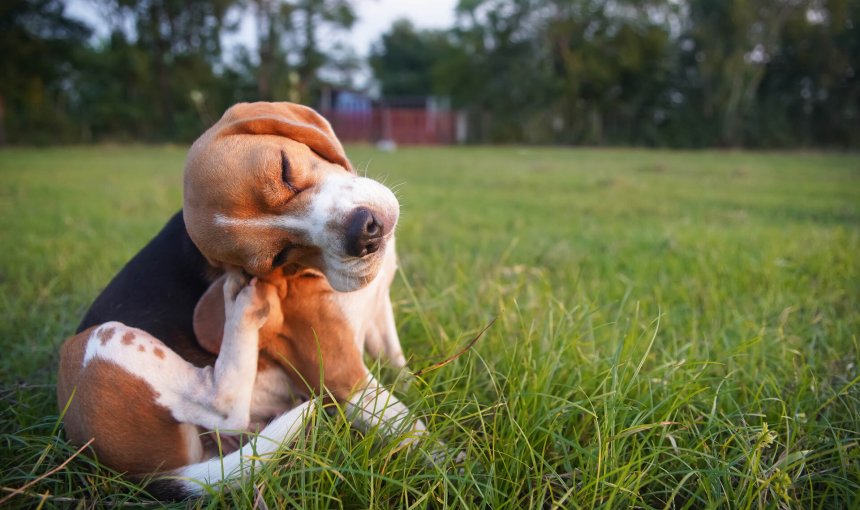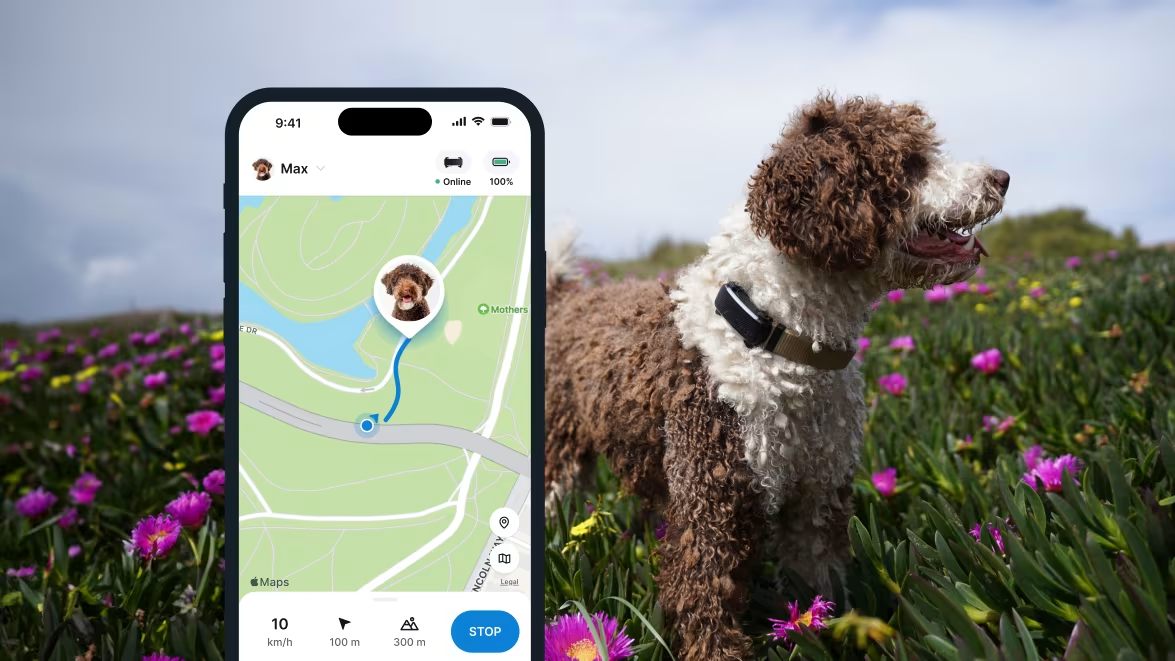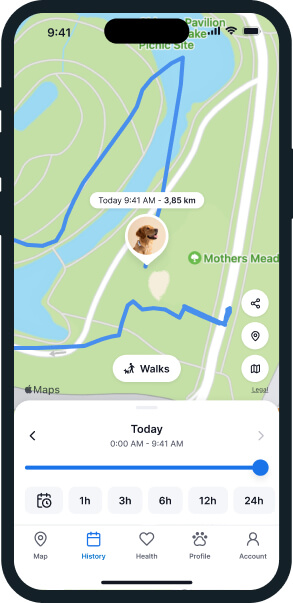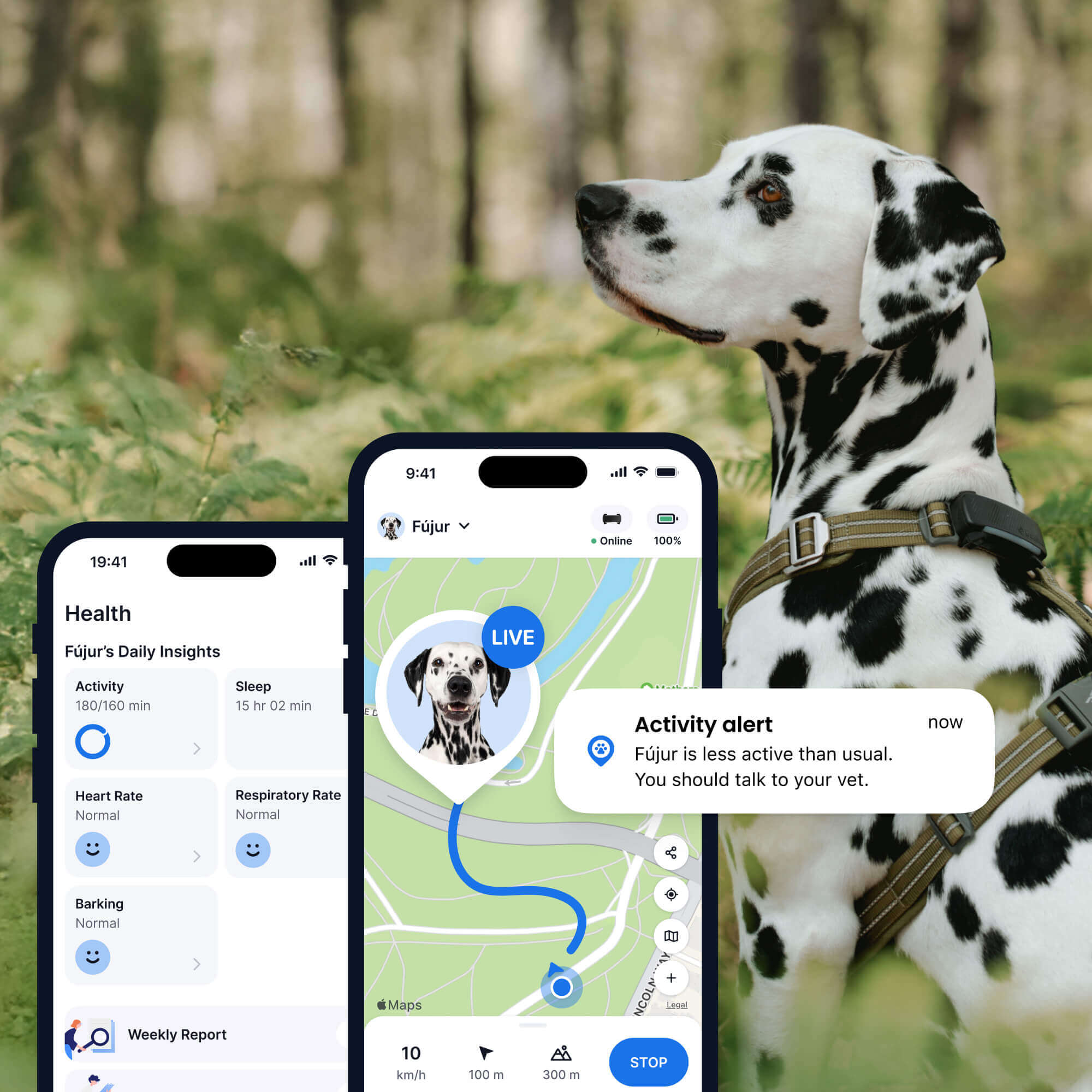Can Dogs Get Lice? How To Keep Your Buddy Scratch-Free
Sadly, yes - turns out, a whole bunch of your dog's favorite outdoor spots can land them with an infection. (Primarily from other dogs.) Here's what to do & how to help.

If you’ve ever wondered – can dogs get lice? – then, sadly, yes, it can be the case that your dog can run into these infectious critters. Here we’re going to cover how to pick up on your dog’s favorite hangout spots – including where they come home extra-itchy from – and what steps you can take to prevent (and manage) an infection.
Key Takeaways
Yes, dogs can get lice! They usually catch them from other dogs at places like dog parks, daycares, or contaminated shared items.
If you see signs of lice, you should take your dog to the vet for a diagnosis. The vet will likely prescribe topical medicine or a medicated shampoo, and you will need to thoroughly clean their bedding, toys, and grooming tools.
To prevent lice, you should keep up with your dog’s regular grooming, check their fur often, and make sure their environment (especially their bed) stays clean.
If your dog wears a Tractive smart dog tracker, you can use the Location History feature to see where they’ve been spending the most time. This can help you figure out which spots might be giving them an itchy problem, like a specific area of the dog park, so you can avoid it.

Always know your buddy is healthy & safe
Read more- Key Takeaways
- Can dogs get lice? What are some signs of lice on dogs?
- Can dogs get lice from humans? Or pass it on to us?
- Can lice live on dogs? And how?
- Where might dogs get lice from?
- Are some dogs more likely to get lice than others?
- How your vet might identify & treat lice on dogs
- What can you do to prevent lice on dogs?
Can dogs get lice? What are some signs of lice on dogs?
Yup, just like humans, dogs can get lice as well. These tiny parasites attach to their skin and feed on their blood. (Gross, we know!) Usually, this’ll turn up as your dog:
- Scratching themselves more than usual,
- Losing some hair from the excessive scratching,
- Rubbing their face on the floor
- Red, dry, scabby skin
- Matted fur
- Sores or lesions from biting and scratching
- Showing visible lice in their fur
- Seeming more restless than usual
⚠️ Don’t see lice in your dog’s fur? Something else in your environment might be triggering the itching.
Can dogs get lice from humans? Or pass it on to us?
No, lice on dogs doesn’t pass on to humans. Nor can you get lice from your dog (or vice versa.)1 Dog lice tend to be species-specific. Primarily, these louse species tend to be found on dogs most:
- Trichodectes canis (which can also help spread tapeworms to your dog)
- Heterodoxus spiniger,
- and Linognathus setosus
None of which pass on to humans or other animals. Rather, these pests live on the skin and fur of dogs, feeding on their blood or skin debris. So if your child comes back from school with a head full of nits, these aren’t likely to pass on to your dog.
Can lice live on dogs? And how?
Much like fleas, lice are small insects that grow in numbers by laying eggs (called nits.) Once the nits are attached to your dog’s fur, they might resemble dandruff or white flakes from a distance.
Nits are usually small, oval, and may be yellow or white in color. They may hatch in 1-2 weeks. Once the nits hatch, they become nymphs – smaller versions of adult lice. By 2-3 weeks, they’ve usually grown up from feeding on your dog’s blood. Once the nymphs are adult lice, they usually live on dogs’ fur for around 30 days – during which time, they continue to lay eggs.
Where might dogs get lice from?
Normally, lice infections in dogs are because of contact with other animals that also have lice in their fur. Or from contaminated surfaces they share with these animals. These could be from:
- Dog parks, where spending time around other dogs might open up the risk of infection
- Dog day care centers
- Group training classes or walking groups – especially ones that take place outdoors in nature
- Kennels or boarding facilities, where your dog might end up sharing food or water bowls with other dogs
- Other contaminated surfaces, like bedding, collars, and even toys – super important if you’ve got multiple dogs at home!
- Grooming centers, where your dog might come in contact with other dogs – and any infected fur.
- Elsewhere outdoors, like if you’re in the habit of going running, hiking, or camping with your dog – and they run into other dogs at campsites, for example.

Follow your dog anywhere
Get real-time location information, wherever they go. And find out when they try to make an escape, or just when they go somewhere they shouldn’t, with Virtual Fences.
Are some dogs more likely to get lice than others?
While any dog can get infected with lice, it’s more commonly seen among:
- Puppies, who might even suffer anemia as a result of the gradual blood loss.
- Older dogs, especially those living in dirty environments.
- Ill and/or malnourished dogs, who might end up scavenging for food in dirty environments.
- Dogs with long, shaggy coats, including Afghan hounds, Lhasa Apsos, Maltese, Shih Tzus, Yorkies, Pomeranians, Newfoundlands, Old English Sheepdogs, and Bernese Mountain dogs.
- Dogs living in warmer, humid climates – conditions that help lice thrive.
- Outdoor dogs, who might be spending time around other dogs in communal spaces or out in nature.
How your vet might identify & treat lice on dogs
If your dog’s been scratching excessively around their ear, neck, shoulders, or butts, or even losing fur in patches, drop by you vet. If you’ve got multiple dogs at home – bring all of them for a checkup. It’s also a good idea to go prepared to answer questions like:
- When did your dog’s symptoms first appear? Has your dog had them before?
- Did you make any changes to your dog’s food, outdoor privileges, or other routines recently?
- Is your dog primarily an indoor or outdoor dog? How often do they head outdoors?
All these questions can help you both better identify where your dog might’ve picked up any lice or “scratchy” substances from – which could also include dust, pollen, and other insects.
Diagnosing lice on dogs
Your vet will begin with a thorough physical examination of your dog’s skin and fur – from nose to tail. They might also take a scrape of your dog’s skin to examine under a microscope to rule out the presence of lice, or other pesky critters, like ticks, mites, or fleas. Or use a special lice comb to check for any nits or larvae in your dog’s fur.
With that out of the way, your vet might prescribe you:
- Topical medication to get rid of the lice over a specific time period. (Usually 2-4 weeks.)
- Medication that they might administer orally or via injection, usually over a few weeks.
- Lime sulphur dips, which they’ll apply to your dog’s body over a few weeks.
- Medicated shampoos that are specially designed to kill lice and nits.
- A vet-approved flea and tick preventive, which can help keep your buddy safe from other infections as well.
What can you do to prevent lice on dogs?
Clean just about everything – from top to bottom
Something in your dog’s environment might’ve turned it into an “itch”-prone zone – like their living and sleeping area, if you’ve got a primarily indoor dog. So make sure to keep these areas clean with regular washing – including your dog’s:
- Bedding
- Toys
- Food and water bowls
- Any favorite shirts or sweaters you leave behind when your dog’s alone at home
- Favorite couches or sofas around the house
- Grooming tools, including combs and brushes
- Your bed – especially if your dog likes to sleep next to you
- Any other items your dog likes to use, play with, or interact with on the regular
Got multiple dogs at home? You’ll have to whip out the vacuum and cleanup mops much more frequently. But with these preventive steps, you’ll be that much better off preventing another infection.
Make regular grooming a priority
Regularly brushing out your dog’s fur can help spread their natural oils better – which can prevent matting and tangling. (All conditions that can attract lice, since they can hide better.) In fact, some dog breeds that are vulnerable to lice, need more frequent brushing and grooming to keep their coats soft and free of tangles.
With a regular grooming routine, you’ll also catch onto nits and lice faster – and get your buddy to a vet much in advance, before they grow in numbers. Just make sure you’re using dog-friendly grooming products that are medically-approved and designated safe for use.
Stay on top of your dog’s pest preventives
Most modern pest preventives (like your dog’s monthly oral chew or spot-on treatment) are effective against lice as well. The key is consistency. Don’t skip a dose, even in the colder months. It’s important to talk to your vet about the best broad-spectrum antiparasitic product for your dog’s specific needs and lifestyle. They can recommend the most effective and safest product – whether it’s a monthly chew, a topical application, or a collar – and help you set a reminder schedule so you never miss a dose.
Use a smart dog tracker
After you’ve started treatment, you need to figure out how to stop a lice infection from happening again. A Tractive smart dog tracker can help you find the source of the problem and notice any health changes quickly.

Strapped to your dog’s collar, you can now:
Figure out where they’re running into lice
Dog lice usually spread when your dog gets nose-to-nose with another dog that has lice. But where exactly did that happen? From your Tractive device, you can:
- Check your dog’s Location History and Heatmap.
This shows you exactly where your dog hangs out the most. Did they spend a ton of extra time in one spot at the dog park, or did they stop for a long visit in a neighbor’s yard? Finding these “hotspots” can tell you where they likely met the infected dog. Once you know the risky area, you can avoid it for a while or clean it up if it’s your own space, which helps stop a new infestation.

- Track your dog in real-time.
If you know your dog is going to be in a place where lots of other dogs are (like a training class or a kennel), real-time GPS tracking lets you keep a very close eye on them. This helps you limit their close contact with other animals until your dog is totally lice-free.
Spot potential health issues early
Your Tractive tracker works as an early warning system, monitoring how much your dog moves and sleeps, learning what’s normal for them. If your dog is suddenly scratching like crazy, is restless all night, or seems extra tired and grumpy because of the irritation, the Health Alerts will let you know about these big changes right away.
Since you can’t watch them 24/7, the tracker is like an extra set of eyes. Catching these small signs early means you can start treatment faster, which means your dog gets relief sooner.




